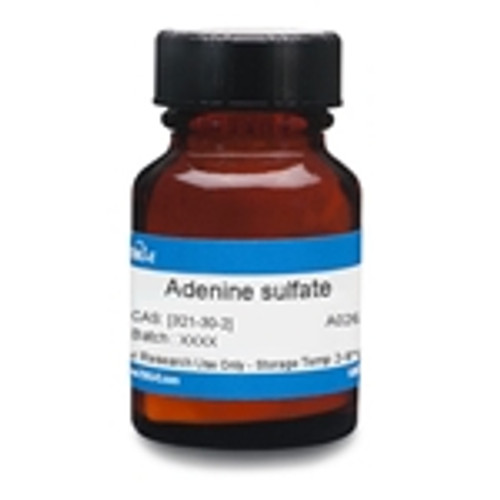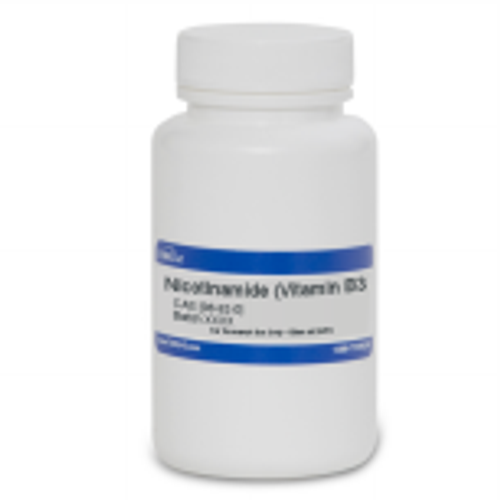Nicotinamide Adenine Dinucleotide (syn: NAD) is a coenzyme involved in cellular metabolism. It consists of two covalently joined mononucleotides (nicotinamide mononucleotide or NMN, and AMP) joined together. It is a signaling molecule and enzyme cofactor and is needed for the activity of many enzymes such as poly(ADP-ribose polymerases (PARP 1 and 2) and cyclic ADP-ribose synthetases, the sirtuin proteins (SIRT1 and SIRT3) and many others. This product is the oxidized form of NAD, indicated as NAD+.
NAD is soluble in water.
| Mechanism of Action |
NAD is involved in redox reactions, carrying electrons from one reaction to another. NAD is an oxidizing agent that accepts electrons from other molecules and becomes reduced. Its other form, NADH, is used as a reducing agent to donate electrons. NAD is also used as an enzyme substrate for several enzymes. It is involved in energy metabolism like mitochondrial electron transport, glycolysis, and citric acid cycle in order to generate adenosine triphosphate (ATP). |
| Eukaryotic Cell Culture Applications |
Leigh Syndrome (LS), a rare metabolic disorder with poorly understood pathophysiology. Primary skin fibroblasts from patient samples taken from those with LS. Cells were grown in a cell-based strategy to understand mitochondrial complex I deficiency pathophysiology. NAD+ is used in fibroblast cell culture media (pyruvate-free glucose-containing media, or galactose-containing media). The glucose-by-galactose replacement induces death of LS fibroblasts, but this death is rescued by pyruvate and exogenous NAD+ via different mechanisms (Iannetti et al, 2018). |
| Cancer Applications |
An increase of NAD can increase cell defence, DNA repair, and apoptosis thus plays a role in cancerogenesis and other diseases. NAD metabolism is essential and there is a complex network of pathways involving NAD and its role in cancer. NAD and NAMPT (the key enzyme recovering NDA from nicotinamide) may influence cancer metabolism. Cancer calls shift from normal OXPHOS to glycolysis metabolism to product ATP faster. This reprogramming, also called the Warburg effect, leads to tumor proliferation. Cancer cells have increased NAD+ levels and an upregulated NAD+ salvage biosynthesis pathway. NAMPT has been proposed as an oncogene that can promote cell proliferation by increasing the NAD+ pool (Navarro et al, 2021). |
| Molecular Formula | C21H27N7O14P2 |
| References |
Iannetti EF et al (2018) Rescue from galactose-induced death of Leigh Syndrome patient cells by pyruvate and NAD+ Cell Death and Disease 9:1135 Kulikova VA, Gromyko DV, Nikiforov AA (2018) The regulatory role of NAD in human and animal cells. Biochemistry (Mosc). 83(7):800-812. PMID 30200865 Navarro MN, Gomez de las Heras MM, and Mittelbrunn M (2021) Nicotinamide adenine dinucleotide metabolism in the immune response, autoimmunity and inflammageing. B. J. Pharmacol. 179(9):1839-1856 |





